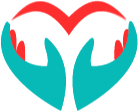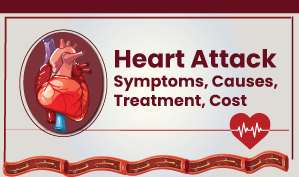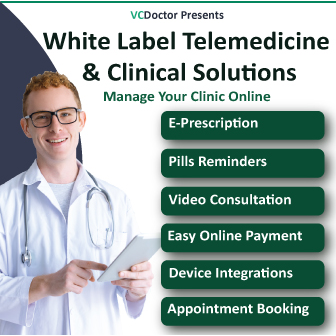What Is A Heart Attack or Cardiac Arrest?
We have grown up witnessing people losing lives of some sudden heart dysfunction. The disease is known as cardiovascular disease, and nowadays, a person who is 35 and above age can suffer from it. So, what is a cardiac arrest?
The answer is when the blood flow to the heart stops or is blocked due to any health condition is known as cardiac arrest. A buildup of fat, high cholesterol, and other substances primarily creates the blockages. It builds plaque in the arteries restricting them from bringing blood to the heart.
Many studies believe that the plaque sometimes gets raptures and forms a clot that restricts sufficient blood flow. Heart attack is also known as myocardial infarction. So this was the definition of a heart attack (myocardial infarction).
What Are The Common Types of Heart Attacks In Men & Women?
Heart attacks or cardiac arrest are categorized into three main categories. All three categories are prone to death or can cause severe health issues for a lifetime. The following are the three main categories:
ST-segment elevation anteroseptal myocardial infarction (STEMI)
Non-ST segment elevation myocardial infarction (NSTEMI)
Coronary artery spasm (CAS), Silent attack, or unstable angina
What is the ST Segment?
ST-segment is the pattern reflecting on an electrocardiogram which is a telecast of your heartbeat. Only the ST segment known as the STEMI can show the elevated segment.
STEMI (Severe Cardiac Arrest)
These are the scientific terms that physicians or myocardial infarction specialists often utilize. An ordinary man cannot understand these types. The coronary artery becomes wholly blocked, or a significant portion of it gets blocked. The artery then stops receiving the blood. The STEMI attacks are series one that can be life-taking or cause severe damage to the human body.
What Are The Symptoms Of STEMI?
A STEMI attack comes with severe chest pain at the center. It sometimes feels like pressure or discomfort or tightness despite sharp shooting pain in the chest. According to a survey, people have also experienced STEMI attacks by having pain in both arms, back or neck, or jaw. The other heart attack symptoms include:
NSTEMI Heart Attacks
NSTEMI is quite different from STEMI attacks. Here the coronary artery is partially blocked. It will not show any changes in the ST segment on the electrocardiogram. Furthermore, coronary angiography will telecast the degree to which the blockage occurs.
A blood test will also show extended troponin protein levels. There might be minor heart damage in this condition, but NSTEMI Attacks are among the serious ones.
Silent Heart Attacks
The coronary artery spasm (CAS) is also termed coronary spasm, unstable angina, or popularly silent heart attack. The symptoms remain the same, just like the stem attack. The early warning signs of a heart attack remain the same, just like the stem attack. People are usually mistaken for the symptoms of muscle pain, indigestion, and many other things.
It happens when the artery gets completely tight and reduces the amount of blood to the heart or blocks it. In such circumstances, only a blood test or an imaging test can show you whether you have a silent attack or not.
These might not be considered harmful to health, but in many cases, it has taken people's lives or given the risk factors for mi of following cardiac arrest.
How Many Lives Were Taken By Cardiovascular Disease (CVD) Each Year?
The present world is full of tension, stress, and anxiety. It has led to many chronic mental illnesses and health issues in the world as a whole. A recent survey states that 17.9 million people die because of CVD (Cardiovascular disease). It represents horrifying statistics which indicate 32% of global deaths. If you want to know how to avoid stress and anxiety, it is crucial to address these issues promptly.
That too 85% were dead only due to heart attacks and stroke. The deaths were recorded mainly in low to middle-income nations. Another statistic shows that since 2019, 17 million deaths have been premature under the age of 65 years. Out of these, 38% is dedicated to CVDs. Another statistic shows that 1 out of 5 attacks are in coronary artery spasm, which is known as silent cardiac arrest.
An Indian survey indicates that people ranging from 35 to 65 years in India die of a heart attack. It is a very concerning situation for everyone. The government is also trying to make necessary arrangements like health policies, health campaigns, cardiovascular disease awareness programs, etc, to educate people about heart attack in Hindi and treatment.
What Are The Best Possible Heart Attack Diagnosis Given In Hospitals?
When diagnosing the root cause of your cardiovascular disease, the cardiologist may perform some major screenings or tests. It will include several questions from the patient and a few tests.
A) Questions From Patients
The doctor or cardiologist will ask about past health happenings like any suffocation, feeling dizzy, having pain in the chest or hands, etc. Moreover, the doctor can ask about diet and sleep patterns, stress levels, mental insecurity, etc.
B) Initial Health Statistics
A cardiologist will also make queries regarding your previous health conditions like Blood Pressure (high or low), Sugar levels, cholesterol, any previous heart problems, etc. You need to describe all such conditions for better diagnosis and cardiac arrest treatments precisely.
C) ECG (Electrocardiogram)
It is the initial and most required diagnostic test for ascertaining the severity of cardiac arrest. The tool sends electronic signals to the heart to check the blockage and blood flow. It holds some sticky patches that are attached to the chest and limbs.
The signals then transmit the information through electrical waves on a monitor or printed on paper. ECG helps diagnose the injured heart muscles as these are not capable of conducting electrical impulses.
D) Blood Test
Blood test reports also depict a heart attack by showing specific heart proteins in the blood when heart muscles have been injured. The emergency room attendants will take a sample of your blood to check for protein or enzymes.
Heart Attack Treatment In Hospitals
Firstly, if a patient is hospitalized due to cardiac arrest, they should be given immediate myocardial infarction treatments. There are various initial procedures and methods provided to the heart attack patient. These include:
1. Immediate Treatment
If your cardiologist notices a cardiac arrest, they will immediately jump on the following processes:
Aspirin to stop blood clotting
Nitroglycerin reduces chest pain and improves blood flow.
Oxygen therapy
Some medications or, if needed, then surgery.
2. General Treatment
Several procedures are executed based on the severity of the treatment. It includes the following methods:
Angioplasty
Angioplasty, Laser
Artificial heart valve surgery
Atherectomy
Bypass surgery
Cardiomyoplasty
Heart transplant
Minimally invasive heart surgery
Radiofrequency ablation
Stent procedure
Transmyocardial revascularization (TMR)
What Are The Best Heart Attack (Cardiac Arrest) Medication?
The procedure mentioned above is followed with some necessary medications. These are necessary medicines that one has to take to get a speedy recovery after noticing the symptoms before heart attack. The medications include:
Anticoagulant
Antiplatelet agent
Angiotensin-converting enzyme (ACE) inhibitor
Angiotensin II receptor blocker
Angiotensin receptor neprilysin inhibitor
Beta-blocker
Combined alpha and beta-blocker
Calcium channel blocker
Cholesterol-lowering medications
Digitalis preparation
Diuretics
Vasodilator
What Is The Heart Attack Treatment Cost?
According to an estimation presented by the leading health agencies, diseases like cardiovascular and treatment of cancer may cost any Indian around $6.2 trillion during 2012-2030. In a private hospital in India, the patient might be charged Rs 1.75 lac to 4.25 lac. It depends upon the type of procedure, medication, and after-care suggested to the patient by the cardiologist.
Food To Induce Quick Heart Attack Recovery
A patient who wishes to recover quickly after a severe heart attack (myocardial infarction) can add these foods to their diet. These supplements prevent heart muscles from any further damage and make a speedy recovery.
lots of fruits and vegetables
lean meats
skinless poultry
nuts, beans, and legumes
fish
whole grains
plant-based oils, such as olive oil
low-fat dairy products
eggs (you can eat up to six per week)
These foods contain saturated fat in a particular quantity. Another important tip is to have your plate full of green veggies and various meals every day. Fish is an excellent source to recover from a severe heart attack. But keep in mind, that moderation is the key here. Have everything in moderation to get the desired results.
Difference Between Heart Attack and Heart Failure
Understanding the difference between symptoms of a heart attack and heart failure can make a big difference in recognizing and responding to these serious heart conditions.
Heart Attack: A heart attack happens when the blood flow to a part of your heart is suddenly blocked, usually by a blood clot. This blockage stops oxygen-rich blood from reaching your heart muscle, which can cause damage or even death of that heart tissue. You might notice the "6 signs of heart attack a month before," which include:
Chest pain or discomfort
Shortness of breath
Nausea or vomiting
Lightheadedness or dizziness
Pain or discomfort in other parts of the upper body, like the arms, back, neck, jaw, or stomach
Cold sweats
Recognizing these signs early is crucial. If you or someone you know experiences them, it’s important to seek medical help immediately.
Heart Failure: Unlike a heart attack, heart failure doesn’t mean your heart has stopped working. Instead, it means your heart isn’t pumping blood as well as it should. This can happen because the heart is too weak or stiff to fill and pump effectively. Pre-heart attack symptoms in males often develop slowly and can include:
Persistent fatigue
Shortness of breath during everyday activities
Swelling in the legs, ankles, or feet
Rapid or irregular heartbeat
While some heart attack symptoms might overlap with those of a heart attack, like shortness of breath, heart failure is a chronic condition that usually gets worse over time if not managed properly.
Heart Stroke: It’s important to clarify that the term "heart stroke" isn’t a standard medical term. Often, people might confuse it with a stroke, which is a different condition affecting the brain. A stroke occurs when blood flow to a part of the brain is interrupted, leading to brain cell damage. While both strokes and heart attacks are serious and involve blood flow issues, they affect different parts of the body.
If you’re worried about your heart health, keep an eye out for these signs, and don’t hesitate to reach out to a healthcare professional. Early detection and treatment can greatly improve your chances of staying healthy and avoiding severe complications.
Conclusion:
So was a complete heart attack guide for 2022. People who do not want to suffer from cardiovascular activities and remain fit should read this article as a guide. It provides enough knowledge on how you can track any cardiac dysfunction or save other people's lives.



 Contact Us
Contact Us







 Hospitals
Hospitals
 Doctors
Doctors
 Diagnostic
Diagnostic
 Pharmacy
Pharmacy
 Health Tips
Health Tips
 Blog
Blog

















Comments